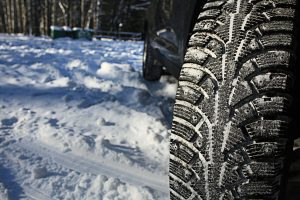Take a deep breath. Can you smell it? Spring is almost here! You may remember that season: Plants are blooming, grass is growing, winter coats are being put away and the most important part; windows are down while we’re driving. I can almost feel it now! Making the transition from winter driving to spring driving can be tricky when you live in a colder winter climate like southern Ontario. Let’s take a look at a few things to make this seasonal transition in Canada easier this year.
Tip #1 – Don’t change the winter tires too soon

Tip #2 – Clean off the road salt

Tip #3 – Be on the lookout and avoid the new season potholes

Many drivers may think it’s just a puddle they see in front of them, but as we now know, it can often be a deep pothole filled with water. If you spot a large puddle, see if you can make a slight change with your vehicle position so your wheels can miss it. Sometimes it feels like you’ll be driving through an obstacle course, but your vehicle and wallet will thank you! To allow you to have room to make a slight position change with your vehicle, try to drive beside empty space instead of having another vehicle directly beside you. If you need to move to the side of your lane to avoid the pothole, it’s easier and safer to do that if no one is next to you.
Tip #4 – Be alert for water pooling and drive according to conditions

Springtime is a great time for many reasons, but making the transition into driving safely still takes some thought before the action. Being patient, alert and staying focused will help you survive on the road in any season.
Article originally written by Scott Marshall and updated in April by Active Green + Ross for 2025.
Scott Marshall is Director of Training for Young Drivers of Canada and started in road safety in 1988. He was a judge during the first three seasons of Canada’s Worst Driver on Discovery Network. Scott started writing columns on driving for his community paper in 2005. Since then his columns have been printed in several publications including newspaper, magazines, and various websites.

